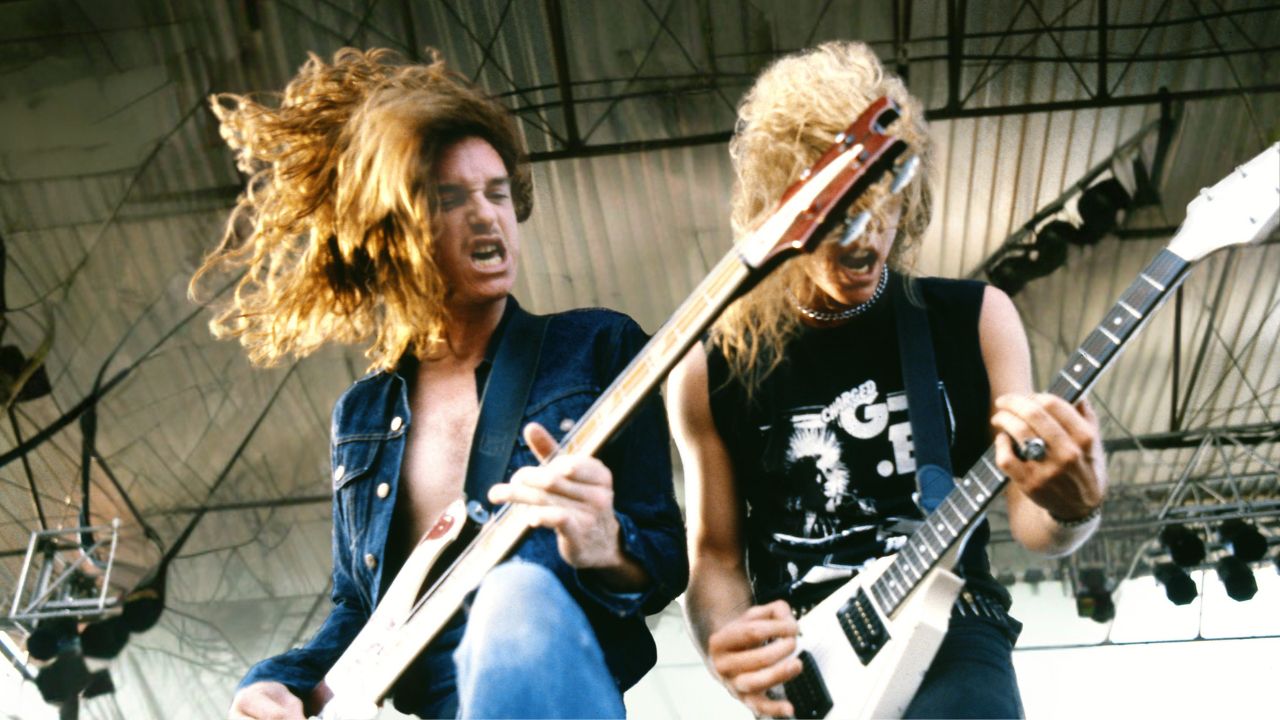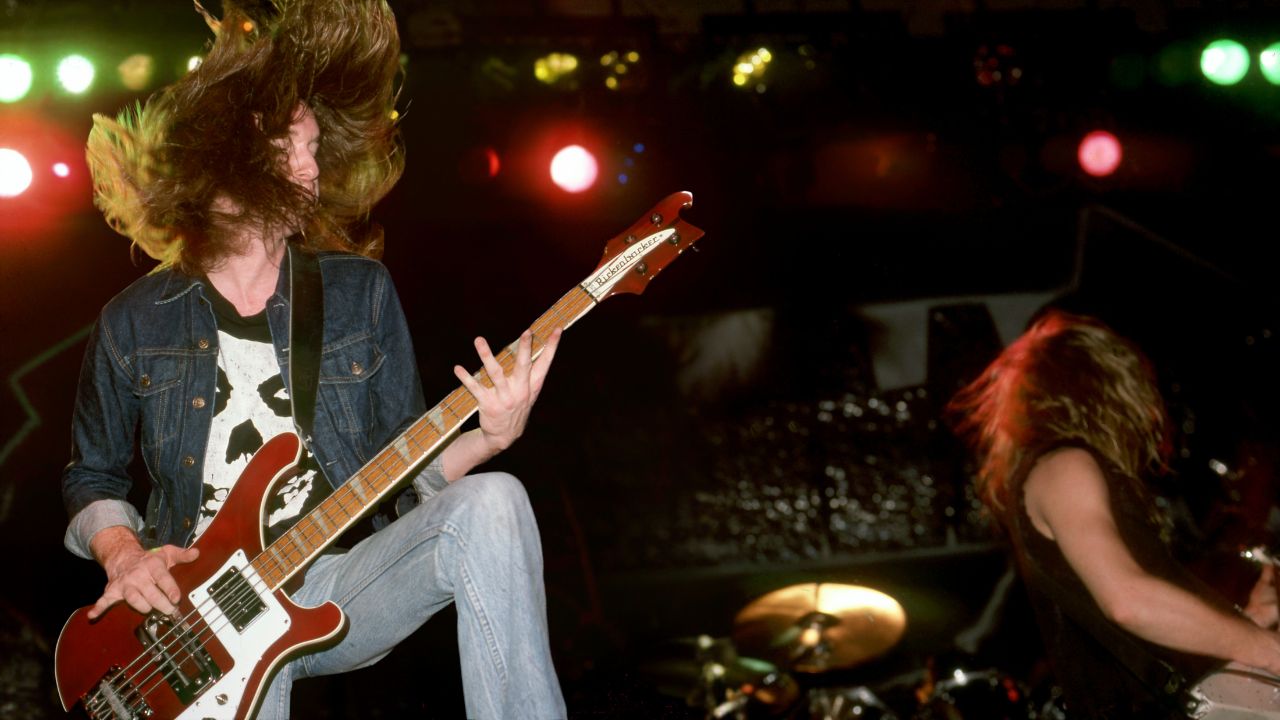“Cliff always wanted to play more than he should have, but we didn’t try to control him – we couldn’t”: How Cliff Burton’s bass masterpiece earned its place in the pantheon of great rock solos
Recorded for Metallica’s genre-sparking Kill ’Em All, Burton’s complex snarl of notes has captivated bassists for years. Dial in your favorite fuzz-wah tone and let it rip

Cliff Burton's shredding fingerstyle bass solo (Anesthesia) Pulling Teeth, from Metallica's 1983 debut album, Kill 'Em All, stamped his identity firmly on the emerging thrash metal movement. Heavy metal bass was not known for being particularly inventive before he came to prominence, but right from the off, Burton was unstoppable.
He recorded parts that metal bassists still learn today as a part of their basic training. Anesthesia, with its famous classical motifs derived from J.S. Bach and a hugely overdriven tone, was just the first of these.
“Cliff always wanted to play more than he should have,” James Hetfield told Bass Player. “He'd go up high on the neck a lot and the bottom would drop out, and certain notes always stood out more than others. But we didn't try to control him – we couldn't. We wanted him to figure out his place himself.”
The opening sequence of (Anesthesia) Pulling Teeth is a Dm triad moving down to a C major triad. Rhythmically, it's a three-over-four grouping – a three-note pattern that fits into 4/4 time. The Dm shape slides up a whole-step to Em for two bars, then up a half-step to an F major triad.
To play the Dm smoothly, use your 3rd finger on the D string's 12th fret and stretch up with your pinkie to hit the high A. Slide down to the 2nd finger for the C major triad.
After the two power chords, the Dm-C progression continues, now in 3/4 time. Note to close the wah pedal on the chords to achieve Burton's enraged tone.
At 01:03 Burton introduces a root-5-octave pattern that moves from B to A to G# back to A. Don't let the alternating 5/8-to-3/4 time signatures throw you; it's easier to count it as a group of five and a group of six.
Get The Pick Newsletter
All the latest guitar news, interviews, lessons, reviews, deals and more, direct to your inbox!
The pattern breaks at 01:13, when it moves up to C and stays in 3/4 (count six). At 01:19 we're in 5/8 again and Burton sets up a cool descending pattern – C triad to Em/B to D/A – that ends with some Baroque-inspired embellishments.
The next section returns to the root-5-octave pattern; it goes from C to E to A with a walkdown line to F, continuing to D then G with a walkup back to the C in the first ending. The second time through, Burton pauses with a little bend before really stepping on the gas.

The fast triplets at 02:16 are tricky to play clean; the open A string is the key, but make sure the top notes don't blur too much – practice it slowly first. The Eb to E over the open A at 02:28 is classic metal; slide up to the high A (D string, 19th fret) with the 3rd finger to make the alternating A to Asus chords easier to play. Now, enters the drums.
This next section consists mostly of typical E minor pentatonic rock licks, not to say that it's easy to play – it’s fast and furious and combined with the wah pedal. If you're on a 20-fret bass, you'll have to pick up the high B natural on the G string at the 16th fret.
The bends at 02:59 are tricky; use your 3rd finger to hold the high D and bend the A up with the 2nd finger, but use the 1st finger behind it to get the grip you need to bend to the right pitch. Burton then drops down to the low E and gets nasty with the wah. Be sure to open and close the pedal on the correct beats.
At 03:07 Burton starts a bluesy lick in the higher octave of E minor pentatonic in the 12th fret position. Then it's back down to low E for another big buildup.
At 03:17 he plays an A7 chord with the open A ringing through the measure – but with the heavy distortion, it's pretty gnarly at this point. The 16th-note lick at 03:30 is a G triad; play the high D with the 4th finger, the B with the 1st, and the G with the 2nd. More pentatonic patterns follow and more riding the low E.
This melodic, sudden break from the mayhem is like the eye of the hurricane, because after a brief trip down to earth with the roaring low E (which ends with a B/F# power chord on top), the ground erupts again with double-stop slides that climb back up with fingernail scrapes up the E and A strings into a gnashing of the D and G strings against the pickups.
You must confirm your public display name before commenting
Please logout and then login again, you will then be prompted to enter your display name.
“When I first heard his voice in my headphones, there was that moment of, ‘My God! I’m recording with David Bowie!’” Bassist Tim Lefebvre on the making of David Bowie's Lazarus
“One of the guys said, ‘Joni, there’s this weird bass player in Florida, you’d probably like him’”: How Joni Mitchell formed an unlikely partnership with Jaco Pastorius




![[from left] George Harrison with his Gretsch Country Gentleman, Norman Harris of Norman's Rare Guitars holds a gold-top Les Paul, John Fogerty with his legendary 1969 Rickenbacker](https://cdn.mos.cms.futurecdn.net/TuH3nuhn9etqjdn5sy4ntW.jpg)







